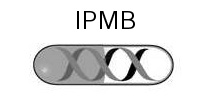TP 2: Structural, physiological and pathogenic features of APP/APLPs dimerization

This is a joined project of the working group of Stefan Kins and Klemens Wild, bringing together a long-standing expertise in the analysis of APP/APLPs intraneuronal transport, neuronal function and structural analysis.
In previous studies it was shown that the deletion of the APP family members caused a neuronal migration deficit and led to a decreased neurotransmission at the neuromuscular junction, possibly caused by a loss of function of APP family proteins in neuronal cell adhesion. Consistently, we found recently that APP forms trans-dimers in a homo- and heterophilic manner mediating cell adhesion via the E1 domain. The E1 domain consists of the N-terminal growth factor-like domain (GFLD) and the copper- binding domain (CuBD). We could map the E1 domain as the essential APP dimerization domain and will determine the precise mode of interaction. Further we will screen for novel factors that interfere with APP/APLPs dimerization and will investigate the features of APP/APLP dimerization in synaptogenesis as well as cell migration.

